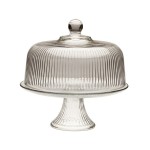Good Advice
Registry items we love!
Aqua
Classic/Elegant
Contemporary
Must haves
- Published in Good Advice, Tips and Tools
Wedding Disaster Scenarios
By Wedding Consultant, Nikki Hilaire
The ceremony (and reception) is running an hour (or two!) late? What do you do?
Identify the cause and remedy. For instance, if lateness is due to a missing but replaceable item (such as a ring pillow or bouquet) I’d grab a substitute from my emergency kit, and get the wedding started.
Otherwise, I’d inform vendors of the situation and enlist their cooperation in making changes to the programme. For example, a late wedding may necessitate serving dinner earlier and allowing speeches during the meal, or having the caterer serve hors d’oeuvres to waiting guests (if possible).
There is an interruption in water supply?
I make it a point to drive around the venue neighbourhood and map out the nearest automated teller machines and convenience stores. I also keep handy the phone numbers for water trucking services.
I discuss any potential water problems with the venue contact closer to the date and on the morning of the wedding. In the unlikely event that the venue is unable to meet water requirements on the day (think sinks running dry) I’d approach neighbours about the possibility of using their supply. There is also the option to purchase water by the gallon from the nearest convenience stores whilst waiting for water trucks to arrive.
It’s raining at your outdoor wedding?
You need to establish a back-up plan in advance. Consider reserving tent walls to be used if necessary; if the venue is not tented there should be at least one covered area.
I often change the reception schedule or program when this happens. For instance, if pelting rain forces guests to run for shelter, the “waiting” period can be turned into the “first dance” item followed by a soca dance party. Guests would be having such a good time that they may not notice that the banquet style dinner was turned into a casual buffet.
The entertainment does not show up?
I keep varied music discs in my car as back-up; the DJ usually does a sound check with me, or someone from my team, at least two hours prior to the reception, so that they can always transition if a musician does not show.
For instance, if your live saxophonist cancels, the DJ can substitute instrumental music, without guests even knowing that something went wrong. It’s all about having that relationship with your vendors.
- Published in Good Advice, Tips and Tools
Preserve your wedding gown
a guide to creating an heirloom
Get it cleaned
Your gown should be professionally cleaned within several days (or weeks at most) after wear. If you will be off on your honeymoon, enlist someone to take it to your dry cleaner as soon as possible. Even if your dress appears clean after the wedding, spills from alcoholic beverages or soda can turn brown with time and become more difficult to remove. Body oils may also cause the dress lining to turn brittle eventually. Tip: Not all dry cleaners are the same. Check with your local bridal shops to find out which they recommend.
Have you dry cleaner WET CLEAN your gown; that is, clean with water and mild detergents. This will prevent any damage to the beadwork or sequins by chemicals used in traditional dry cleaning. Wet-cleaning also ensures that invisible stains from body oils, soda or alcohol are removed. Once the dress has been well rinsed, no chemicals or residue should be left. Package well
Before you send your gown to be cleaned, you should:
- Know what fabric your dress is made of; silks are notoriously difficult to have cleaned.
- Check to see if there are cleaning instructions on the dress label. These may read: Dry Clean Only or Professional Wet-Cleaning Recommended
- Identify any visible stains or dirt on the dress for your dry cleaner’s attention.
- Note whether your dress has any sequins or beads that may need protecting and whether they are glued or sewed on. Embellishments that are glued on are more prone to coming off during the cleaning process.
Store your gown in a way that will protect and preserve it.
One of the absolute worst ways to store your wedding gown is in the plastic bag from your dry cleaner or a plastic storage bag. Most plastics will give off chemical fumes that can cause your gown to become discolored over time. Plastics are also very good at sealing in moisture from excess humidity, which can lead to the growth of mold and mildew.
If your wedding gown has covered metal buttons, pins or sponge shoulder pads or padding, these should be removed and stored separately. These items can break down at different rates and release chemicals that may damage your gown.
If you’re going to hang your dress in a closet, use a plastic or padded hanger; if you use the wooden or wire ones, the weight of the dress can cause the fabric to stretch and distort.
It is recommended that the gowns be packed with white acid-free or pH-neutral tissue paper and boxes. Ordinary paper contains acid which can literally scorch your gown. Packaging in the box and using the tissue paper will also allow the gown to ‘breathe’ and get rid of excess moisture. Estimated cost of box, TT$350.00; cost of 10 sheets of tissue TT$20.00.
The tissue is rolled up and stuffed inside the bodice and sleeves of the gown to prevent wrinkles and preserve the shape. It’s best to avoid folding if possible as folds can become permanent with time and weaken the fabric. If you do fold your gown, ensure the radius of the curve is as large as possible to avoid sharp creases.
A dark, cool, dry place.
Store your gown, either hanging or boxed, in cool, dry areas, free from drastic temperature changes. Select an area with adequate air circulation, but away from light. Interior closets that meet the temperature and circulation requirements can be ideal.
Note: Even with proper treatment, some garments will turn yellow with age. This is typical with the ageing of silk and wool and is considered the ‘patina of age’.
- Published in Good Advice, Tips and Tools

















